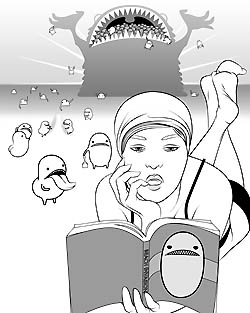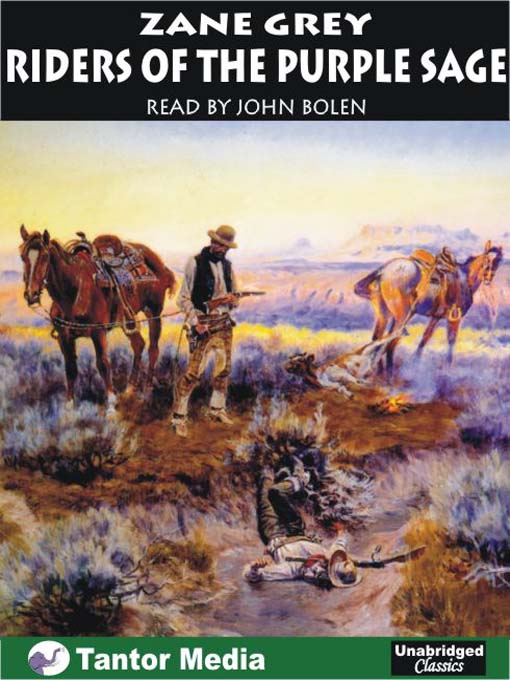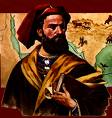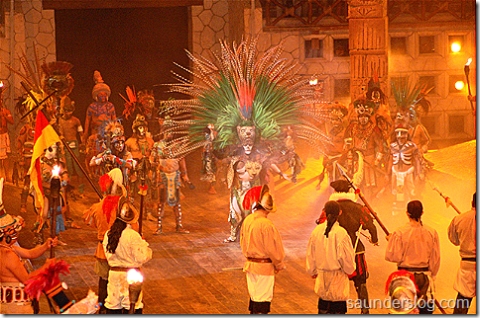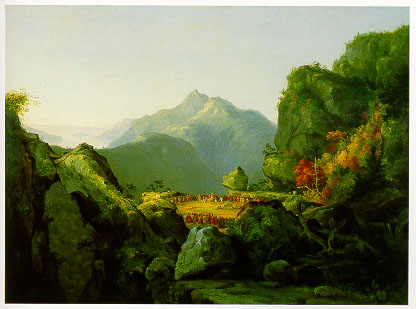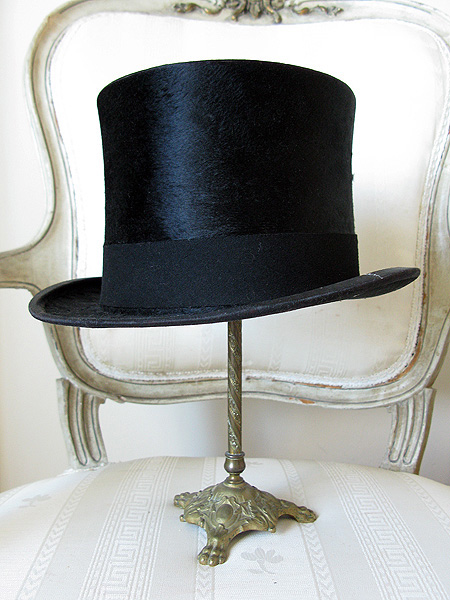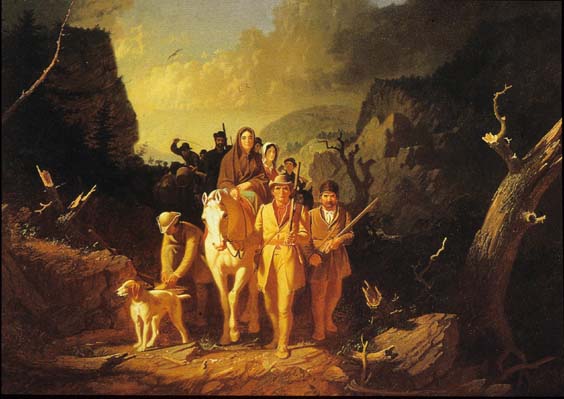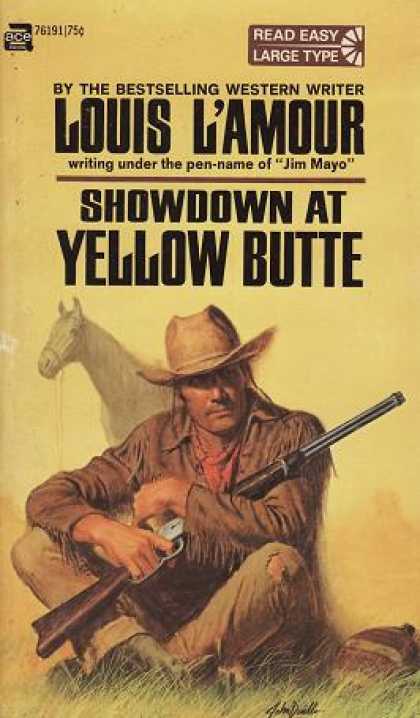|
Irvine Valley College: Online Literature Study of the School of Humanities and Languages Literature 110 - Popular Literature Spring 2013 - Ticket #62740 // Marjorie Coverley Luesebrink, MFA, Instructor
Unit 6: Cowboy Jamboree Showdown at Yellow Butte, Louis L'Amour Showdown at Yellow Butte, Louis L'Amour:
Zane Grey's first novel, Riders of the Purple Sage, was published in 1912 - and it was an immediate best-seller. It led to a career of nearly 60 novels and 110 films, one TV episode, and a series, Dick Powell's Zane Grey Theater based loosely on his novels and short stories. Read all about Zane Grey's work and biography. This is interesting stuff! More on Zane Grey from the official site that owns the works! Wiki on Zane Grey (good article). Zane Grey became the iconic name in Cowboy Literature - and his influence was endemic throughout the Western genre. We have traditionally read *Riders of the Purple Sage* for our Cowboy genre book in this class. However, the Zane Grey estate has bought back the copyright for this (I am not sure of how this mechanism would work, since this book should be out of copyright by now) -but in any case, the IVC Bookstore could not provide *Riders* this semester. I will leave up all the Lecture Notes for Zane Grey's novel. But, instead, we will be reading a novel from Louis L'Amour. This novel will provide a very different look at the Cowboy Genre and a distinct difference from Grey's work. The contrast between the two books is very instructive! (see Zane Grey Lecture Notes which comes at the conclusion of the Louis L'Amour material!)
Although *Riders of the Purple Sage* was not the first Genre Western fiction, it set the tone for the flood of western-themed stories that followed. The Western Genre was very popular up until the 1960's and, since then, has shrunk considerably. Most bookstores carry only a handful of western titles (as opposed to Romance or Sci-Fi which often occupy large shelf areas of the fiction offerings). Still and all, while the Western Genre as we have known it - with corrals and ranch hands and cattle - has declined, the central themes of this genre still drive contemporary fiction. The list of Western Fiction Authors carries many names familiar to the general public today: Larry Mc Murtry: His Pulitzer Prize-winning 1985 novel, Lonesome Dove, is a historical saga that follows ex-Texas Rangers as they drive their cattle from the Rio Grande to a new home in the frontier of Montana. He co-wrote the adapted screenplay for Brokeback Mountain. Lonesome Dove was adapted into a hit television miniseries. Cormac Mc Carthy: He received the Pulitzer Prize in 2007 for The Road, and his 2005 novel No Country for Old Men was adapted as a 2007 film of the same name, which won four Academy Awards, including Best Picture. He received a National Book Award in 1992 for All the Pretty Horses.
Charles Frazier's *Thirteen Moons* takes us back to the early frontier in the Carolinas. A great modern Western! Charles Frazier: Cold Mountain, his highly acclaimed first novel, was an international bestseller, and won the National Book Award in 1997. A movie adaptation was released in 2003. His second novel, Thirteen Moons, was published in 2006, with an $8 million advance from his USA publisher. This is just to name a few! It is fascinating to see the way that the Western Genre themes have evolved in contemporary fiction - a good topic for the Discussion List! But
on to Louis L'Amour . . . . This lecture is going to be organized on a slightly different rubric because of the specifics of the Western Genre. We will continue to look at structure and characters - but taking a look at the history and evolution of the genre is an important aspect in understanding Western tales - and so we will spend some time with the traditions that contribute to Cowboy stories!
Daniel Boone in Kentucky By the time we get to the "Cowboys and Indians" stories that populate the genre of Western Fiction, we are well beyond the time that there was actually a "frontier" in the US. Even the earliest works of Louis L'Amour and Zane Grey were written long after the last real Indian battles had ceased and just about at the end of the time when there was any "wilderness" left in the States. For that reason, especially, we need to look further back in time to see the origin of the "frontier" mentality and into earlier examples to find the "set pieces" that we see in Western Fiction.
Adventure and Exploration in the Old World Stories of exploration and adventure have always been with us. One of the very first stories that we have written evidence of is the *Epic of Gilgamesh.* Lots of things happen in this tale from earliest Sumeria - but one central plot in the epic is the journey of Gilgamesh into the "wilderness" to find the "Tree of Life."
Gilgamesh with Lion - not too far from Daniel Boone and a Mountain Lion, eh? It is notable that Gilgamesh is punished by the Gods for cutting down this Tree - one of the first examples of a "motif" that will persist in tales of exploration and adventure. We also see the idea of the "sidekick" in Gilgamesh's friend, Enkidu (a wild man of the outdoors who dies in the course of the story). Then, too, we have a motif that will persist in stories of wild nature - the idea that women are a calming and civilizing force in society! If you are not familiar with Gilgamesh, please read about this Epic before you go forward! Spark Notes on the *Epic of Gilgamesh.*
Marco Polo, explorer and businessman Gilgamesh was supposed to have lived around 2700 B.C. - accordingly, much of the world was a wilderness at the time! But as the main accessible areas of the East, Africa, and Europe became inhabited, the principle adventures and "explorers" were kings and generals who were going long distances on war campaigns. We can think of Alexander the Great, Caesar, and Genghis Khan. By the early Middle Ages, some adventurers were even businessmen, such as Marco Polo. All of these famous adventurer-explorers' stories contributed to motifs and sub-plots that can show up many centuries later in our literature.
Pocahontas in England See the story of Pocahontas in History (These include the "native-helper-princess" [think Pocahontas, Sacagawea, and La Malinche] and the "friendly-but-not-so-friendly chief" that we recognize from American legends!)
Aztec God confronts Spanish Conquitadores
New World Frontiers But the American wilderness experience, while using folk and historical motifs and ideas, was unique in many ways! First of all, although many cultures had settled "frontier" lands in the past - and we even have written records of these emigrations of the Greeks, the Romans, the Celts, the Anglo-Saxons - virtually no culture occupied so much land so fast and with so much documentation. The invasion of the "New World" represents a stunning period in history. Even in the Spanish Americas, the Spanish and Portuguese conquered a huge new world in South America and Mexico - and while this was largely directed by the Monarchs of those countries and often involved large expeditions to develop mines of gold and silver and other commercial ventures - the settlement of the land was a remarkable event. Regardless, the availability of so much space and so many resources - while not uncontested - is unprecedented in modern written history.
The American Frontier - A place of Romance and Opportunity See a wonderful essay on Nature in the American Frontier The wilderness experience in the United States has two very different kinds of purpose, and, as we would expect, the legends and stories surrounding each differ a good deal. Trading Stations First, of course, there was the establishment of "trading" outposts in the New World. The Jamestown settlement was one of these. The French trading stations on the Great Lakes, also, were only in business to get furs. New Amsterdam (now known as New York) was another. Although they took some valuable land to establish their trading colonies, the traders there were not looking to the interior for expansion and a new country. They wanted to keep the Native Americans at bay, peaceful, and willing to trade. The trade goods that only the Native Americans could supply (at first) were the life blood of these enterprises - and for the most part, the traders were backed by powerful commercial establishments at home. Thus, when they needed help with the natives, they could ask the King to send an army - if he could. If he would. Since these trading stations were mainly commercial in the beginning, the men often did not bring their families with them. Thus, they tended to intermarry with the native population of women (again, Pocahontas).
Beaver fur hats were all the rage in Europe - and very pricey! The Beaver Fur HatFrom about 1550 until 1850, felt hats were fashionable in much of Europe and the felt hat industry became the driving force behind the fur trade. By the late 1500's, the beaver was extinct in western Europe and was close to extinction in Scandinavia and Russia. The North American fur trade became a new source and kept the fashion going for another 200 years. By the way, Daniel Boone did NOT wear a coonskin cap - those were for rubes - he always used the finest beaver fur for his hats!
Note in the popular versions, Daniel Boone is wearing a Coonskin Cap - egad!
Clan Migration The second kind of settlement is the one we are more familiar with in our popular folklore - and that is the family or clan settlement. The Pilgrims, Puritans, and Quakers followed this model - whole groups of people (often in extended families) who determined to leave their homeland and start fresh in the New World. [This is also true of the Mormons, who figure largely in *Riders.*] They brought not only wives and children but pigs and chickens, seed to plant, and family heirlooms! It is this endeavor that has influenced our "frontier" narratives of the United States - and our Western Fiction is a direct descendant of these lives and the stories they produced.
Famous painting by Caleb Bingham of Daniel Boone leading settlers through the Cumberland Gap We don't normally associate our "Cowboy and Indian" mythology with the earliest of the Eastern settlers, but they were the real model and the original pioneers! The legends of Daniel Boone, Davy Crockett, Joseph Walker, and the characters in the novels of writers like James Fenimore Cooper are the source for almost all of the notions and concepts of Western Fiction. Let's take a look at some of these stories.
Continue to next page - to Unit 6b More about *Showdown at Yellow Butte*
Western: Louis L'Amour. Here is his bio page: http://www.louislamour.com/aboutlouis/biography.htm. The page includes links to lists of titles.
Marjorie Coverley Luesebrink: write to me with questions!
Marjorie Coverley Luesebrink, MFA, your Instructor, is a Professor of English in the School of Humanities and Languages, Irvine Valley College, Irvine, California. See Online writing at Home Page. |
| MENUBAR: About Your Class // Class Syllabus // Lecture Notes // Reading List // Recommended Reading // Assignments // Grading Policies // Contact Your Instructor // Announcements // Discussion |
